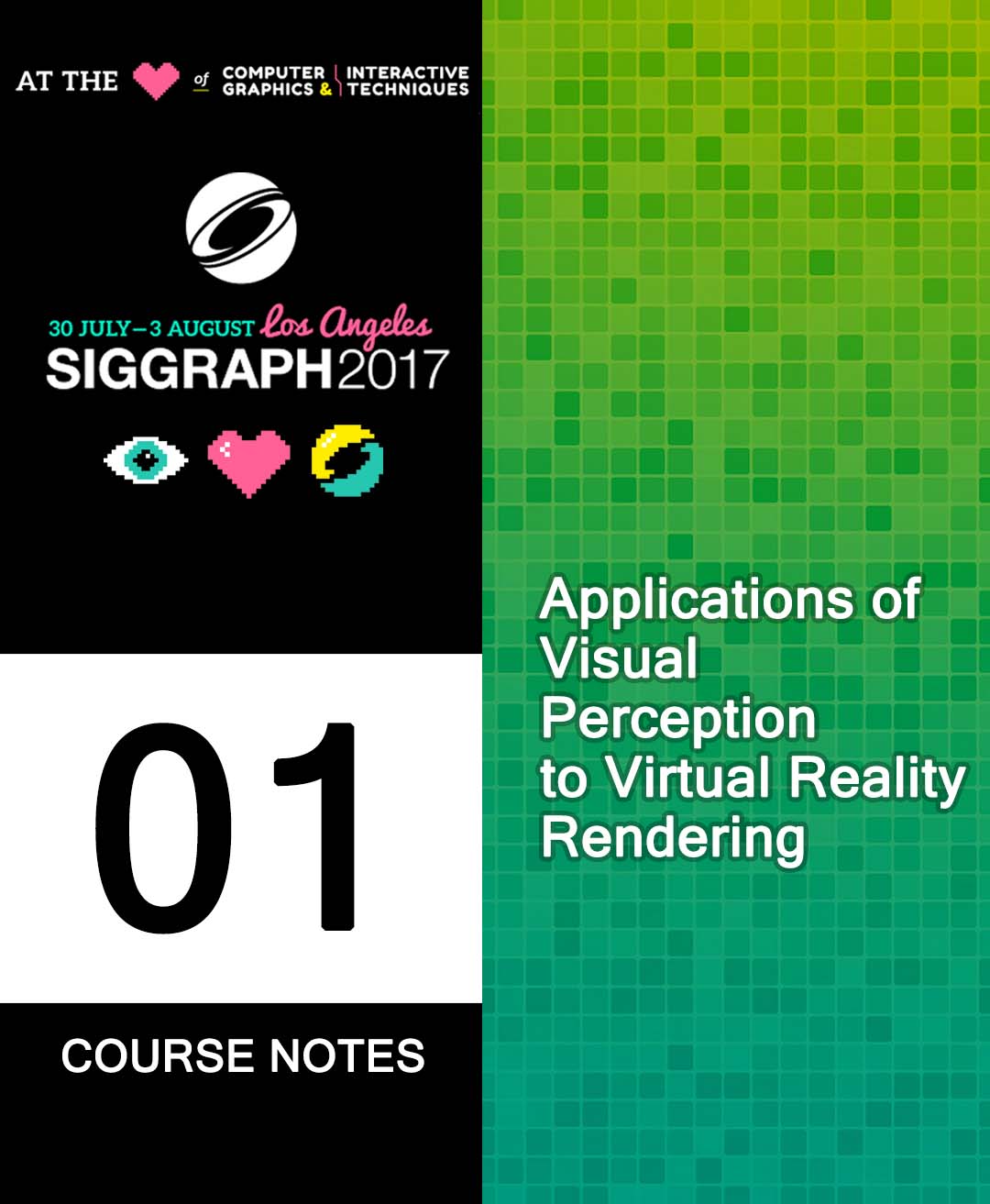“Applications of Visual Perception to Virtual Reality Rendering” by Kim, Zannoli, Koulieris, Wetzstein and Steinicke
Conference:
Type(s):
Entry Number: 01
Title:
- Applications of Visual Perception to Virtual Reality Rendering
Course Organizer(s):
Presenter(s)/Author(s):
Abstract:
Prerequisites
Familiarity with stereo graphics and modern graphics pipelines.
Level
Intermediate
Who Should Attend
Developers, researchers and students interested in mixed-reality graphics
Description
Over the past few years, virtual reality (VR) has transitioned from the realm of expensive research prototypes and military installations into widely available consumer devices. But the high pixel counts and frame rates of current commodity devices more than double the rendering costs of 1920×1080 gaming, and next-generation HMDs could easily double or triple costs again. As a result, VR experiences are limited in visual quality, performance, and other capabilities. Human visual perception is critical to creating immersion while keeping up with increasing performance requirements, so an understanding of visual perception and its applications in real-time VR graphics is vital for HMD designers, application developers, and content creators. This course begins with an overview of the importance of human perception in current virtual-reality technologies. It includes analysis of the key characteristics of the human visual system and the psychophysical methods used to study its properties. After establishing the perceptual groundwork, it presents three case studies outlining the applications of human perception to improving the performance, quality, and applicability of VR graphics. It concludes with a discussion of important future work and open challenges in perceptual VR, and a Q&A session for more in-depth audience interaction.




